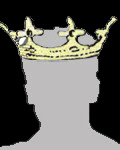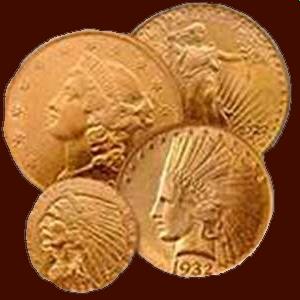













The Paragon Of Metal Detecting
Powered By Sispro1
British Sterling Currency - Numismatics,
Unite
For Reference ONLY
Everything For The Detectorist
Commonwealth (Oliver & Richard Cromwell) 1649- 1659 AD
Royal Monarchy
Copyright All Rights Reserved by Nigel G Wilcox E-Mail: ngwilcox100@gmail.com
Designed by Nigel G Wilcox

Pages


Unite
Sometimes referred to as "breeches money" this type of late hammered coinage was minted in England after a period of civil war which culminated in the execution of King Charles I in London in 1649.
Hammered coins from this period bear no portrait of a king or queen for there was none. Instead there is a simple puritan design. The reverse depicts co-joined shields of England and Ireland, with a date and the legend "GOD WITH VS". The obverse bears the legend "COMMONWEALTH OF ENGLAND" and a single shield in the centre with a mintmark, to complete the legend.
This period was also a time of innovation in minting coins. The traditional hammered technique for making coinage was coming under pressure from masters of forgery who made coins from de-based metals using crude home made dies and surface silvering from coin clippings.
A solution was offered by Pierre Blondeau - milled coins - with edge writing. He was commissioned to prepare samples dated 1651 using his press. Although he completed this task, producing around 100 coins of extremely high quality the mint was not inclined to accept his innovation and fought to delay the introduction of his expensive technology.
In 1656, after repeated attempts, Pierre Blondeau persuaded Parliament to take up his new press techniques, and he was finally commissioned to make the "Cromwell Coinage" using dies made by Thomas Simon, with gold and silver supplied from the mint. These coins were made in limited numbers.
During 1657 there was a Trial of the Pix, where retained coins from the mint were tested for both weight and metal purity. The mintmark sun which had been the universal mintmark was changed after the trial to an anchor mintmark which was used for the remaining years 1658 to 1660.
Pierre Blondeau was to make one final series of Cromwell coins using dies supplied by Thomas Simon dated 1658. These milled coins were made in significant numbers but not without production problems. The Cromwell silver crown of 1658 is notable for a die crack in the lower half of the coin.
Oliver Cromwell died while Pierre Blondeau produced milled coins in 1658. In the remaining two years the mint reverted back to making hammered coinage which seems to have been produced in very small quantities with poor quality before the monarchy was restored in 1660.
Gold unites were issued during the Commonwealth, this time bearing a legend exclusively in English: THE COMMONWEALTH OF ENGLAND on the obverse and GOD WITH US on the reverse. This was due to an association of Latin with Catholicism.
They were also issued during a period when hammered coins were issued under King Charles II (i.e. 1660-62), showing a left-facing bust of the king wearing a laurel and the legend CAROLUS II D G MAG BRIT FRAN ET HIB REX -- there were two issues, the second indicating the value "XX" behind the king's head. The reverse shows a crown over the shield with the royal arms dividing the letters "CR" and the legend FLORENT CONCORDIA REGNA. The gold unite was replaced by the milled gold Guinea in 1663, and a twenty shilling coin did not reappear until the Sovereign of 1817
Hammered coins from this period bear no portrait of a king or queen for there was none. Instead there is a simple puritan design. The reverse depicts co-joined shields of England and Ireland, with a date and the legend "GOD WITH VS". The obverse bears the legend "COMMONWEALTH OF ENGLAND" and a single shield in the centre with a mintmark, to complete the legend.
This period was also a time of innovation in minting coins. The traditional hammered technique for making coinage was coming under pressure from masters of forgery who made coins from de-based metals using crude home made dies and surface silvering from coin clippings.
A solution was offered by Pierre Blondeau - milled coins - with edge writing. He was commissioned to prepare samples dated 1651 using his press. Although he completed this task, producing around 100 coins of extremely high quality the mint was not inclined to accept his innovation and fought to delay the introduction of his expensive technology.
In 1656, after repeated attempts, Pierre Blondeau persuaded Parliament to take up his new press techniques, and he was finally commissioned to make the "Cromwell Coinage" using dies made by Thomas Simon, with gold and silver supplied from the mint. These coins were made in limited numbers.
During 1657 there was a Trial of the Pix, where retained coins from the mint were tested for both weight and metal purity. The mintmark sun which had been the universal mintmark was changed after the trial to an anchor mintmark which was used for the remaining years 1658 to 1660.
Pierre Blondeau was to make one final series of Cromwell coins using dies supplied by Thomas Simon dated 1658. These milled coins were made in significant numbers but not without production problems. The Cromwell silver crown of 1658 is notable for a die crack in the lower half of the coin.
Oliver Cromwell died while Pierre Blondeau produced milled coins in 1658. In the remaining two years the mint reverted back to making hammered coinage which seems to have been produced in very small quantities with poor quality before the monarchy was restored in 1660.
Gold unites were issued during the Commonwealth, this time bearing a legend exclusively in English: THE COMMONWEALTH OF ENGLAND on the obverse and GOD WITH US on the reverse. This was due to an association of Latin with Catholicism.
They were also issued during a period when hammered coins were issued under King Charles II (i.e. 1660-62), showing a left-facing bust of the king wearing a laurel and the legend CAROLUS II D G MAG BRIT FRAN ET HIB REX -- there were two issues, the second indicating the value "XX" behind the king's head. The reverse shows a crown over the shield with the royal arms dividing the letters "CR" and the legend FLORENT CONCORDIA REGNA. The gold unite was replaced by the milled gold Guinea in 1663, and a twenty shilling coin did not reappear until the Sovereign of 1817



Oliver Cromwell
Main Coin Menu

VIEW ALL MENUS
Member NCMD
6. S. Menu
























